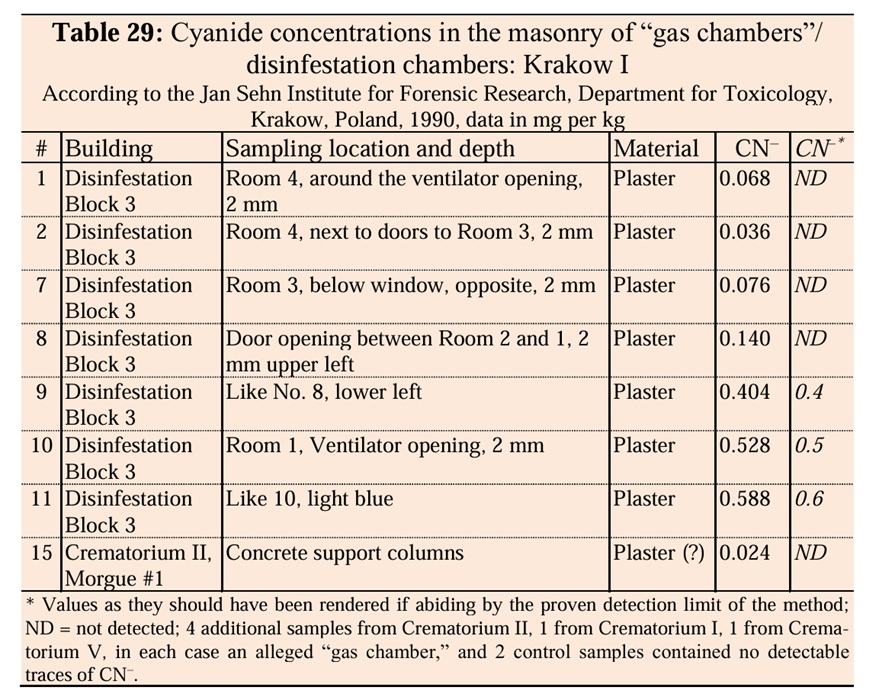HansHill wrote: ↑Sun Nov 02, 2025 2:30 pm
....
I didn't have this on my bingo card for today.
1) You realize you are probing and critiquing the 1990 Markiewicz report, yes? The one that Revisionists also probe and critique?
I am asking questions to get a better understanding.
2) Why did you chop the start of Archie's post where he writes:
Nonsense. All these miniscule trace readings from Markiewicz merely underscore the absurdity of his method which struggles to detect cyanide even in the disinfestation chambers.
Because I was already asking a lot of questions, just about the table.
3) That part of the quote taken in context (which I have emphasized) means that your probing and critiquing the methodology means that you share the same critiques about this report that Revisionists hold.
That suggests you do not understand it, which is something I have suspected for a while. I see overconfident so-called revisionists positioning themselves as if they are experts, when they are clearly not.
4) Revisoinists have discussed this report and it's failings ad nauseam, in fact I opened my account here on CODOH critiquing this exact report, and the absurd results and methodologies here:
viewtopic.php?p=1837#p1837
He gets low readings, like Rudolf got low readings and Leuchter got no readings at all. No one disputes that the readings for the various remains of the Kremas and the two farmhouse/bunkers are lower than in delousing chambers. That he gets low readings, when that is what you believe, makes your claim of absurdity rather odd. He produces results you accept!
5) It is your buddie Confused Jew who insists this report stands on merit, and has cited it many times including in this very thread. Perhaps you should drop the snark towards Archie, and address your questions towards Confused Jew who leans heavily on this report (and its followup) as central to his position?
This is where it gets difficult, especially with Archie removing some of my responses. There are two parts to the chemistry. The result of the testing and the conclusion to be reached from the conclusion. The result is agreed, the residue level is low. The conclusion is where there is disagreement.
Can we conclude, based on the chemistry alone, that the Kremas were not used as gas chambers? So-called revisionists argue yes, others argue no. That is where evidence of usage comes into play, except that you, Archie and others do not want to discuss that.
CJ explained that issue, when he said, "Rudolf assumes that the amount of cyanide found in a wall sample can directly tell us whether mass gassings happened." "Rudolf never establishes an expected signal, only an asserted one. Without that, “lower than expected” becomes “lower than something I assumed,” which isn’t a scientific inference."
Rudolf, Archie and you are scientifically and evidentially wrong, to end the investigation with only the test results and make a conclusion from that.

